Just returned from a long trip to Colorado, picking up parts for Consolidated LB.30 Maid of Athens (AL557).
On our way back, we arranged to visit Charles Runion’s Wings Remembered Museum in Lebanon, Tennessee. Guests must call ahead to schedule a visit, but let me say now, it is WELL worth it. We had an amazing time and intend to come back so that we can go over it all again without rushing.
If you get a chance to check it out, tell him HangarThirteen/ProjectWarbird sent you!
Photos taken 20 April 2024.
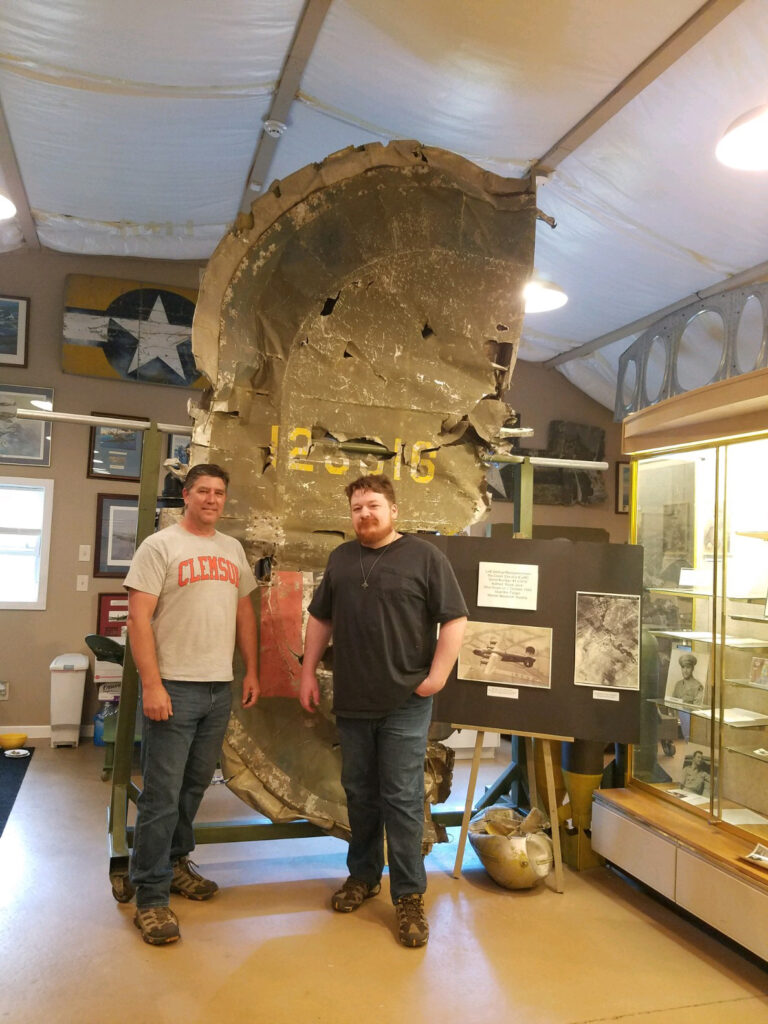
Eric Miller and I pose with the vertical stabilizer of Black Jack (41-23816, 44BG).
The bomber was named for its serial number – if you add the numbers together, the sum comes to 21.
We are currently working to restore the vertical stabilizer of Consolidated LB.30/B-24 Maid of Athens. Being an RAF aircraft, her vertical was all black.
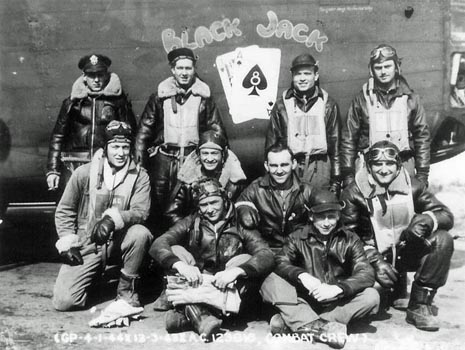
The crew of Black Jack (41-23816, 44BG).
Black Jack was lost over Wiener Neustadt, Austria – one of the hubs of Messerschmitt fighter production – on 1 October 1943. At the time, the 8AF’s B-24 units were on loan to the 9AF in occupied-Libya. Five her crew were killed.
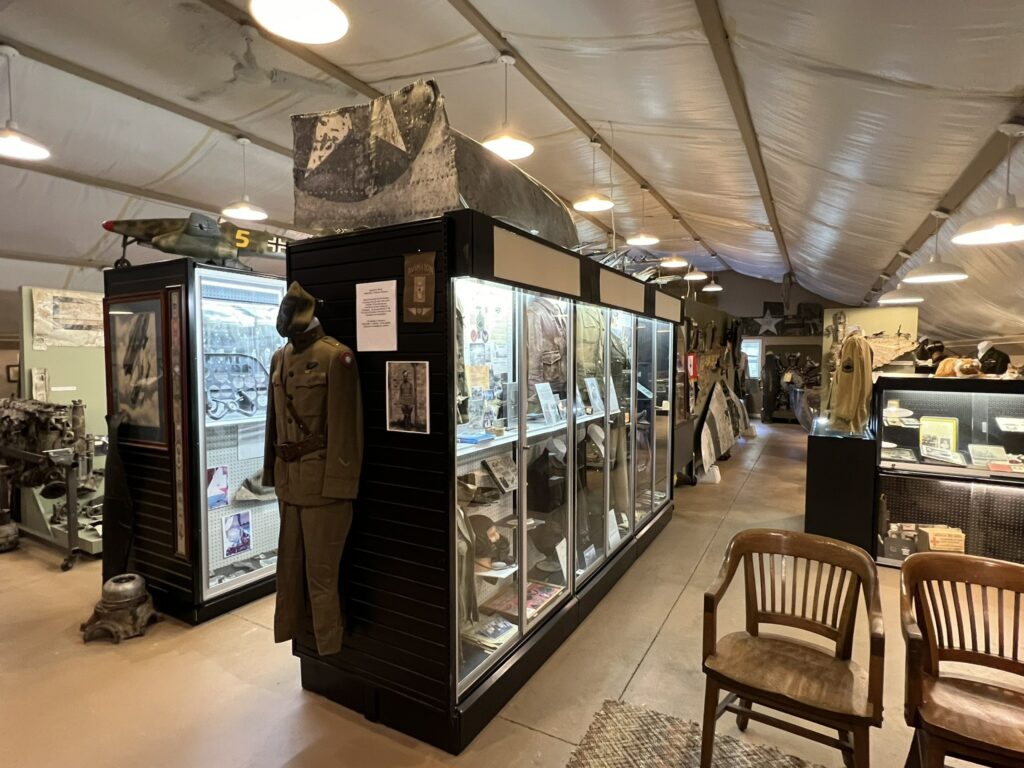
The view upon entering the Wings Remembered Museum.
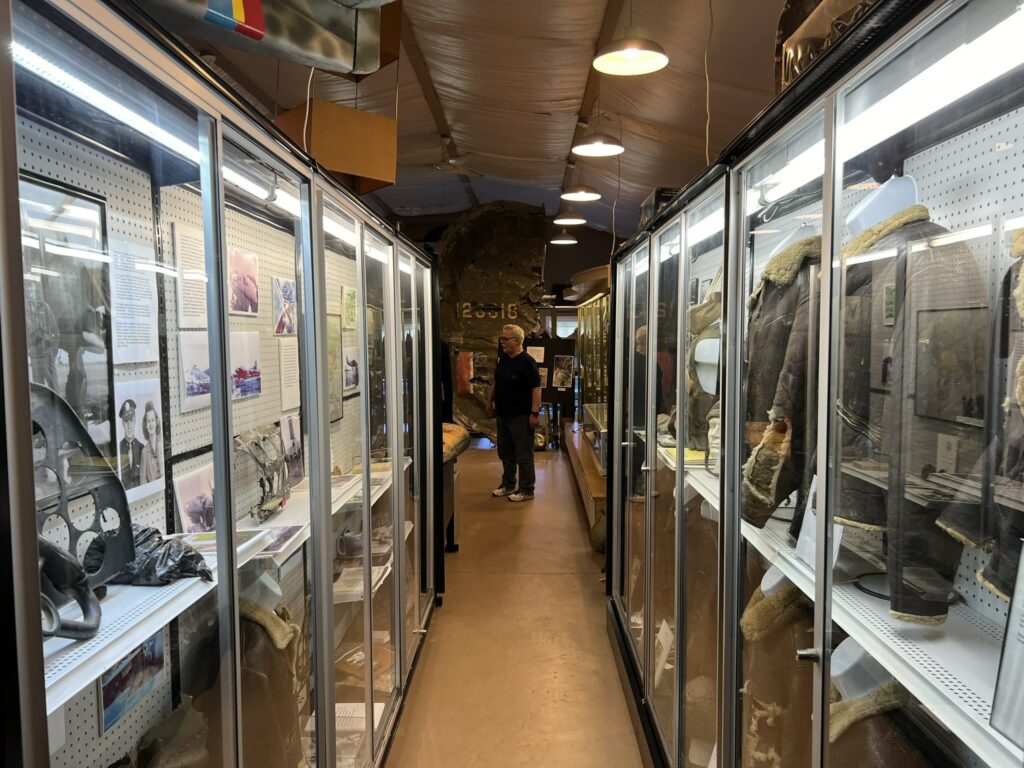
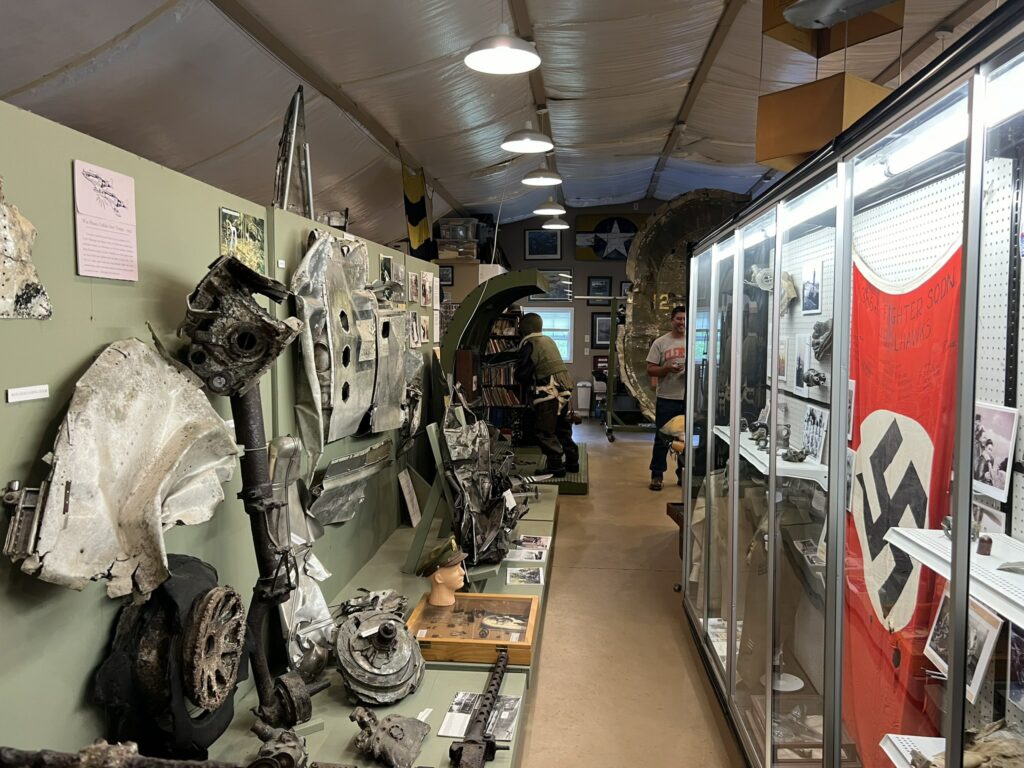

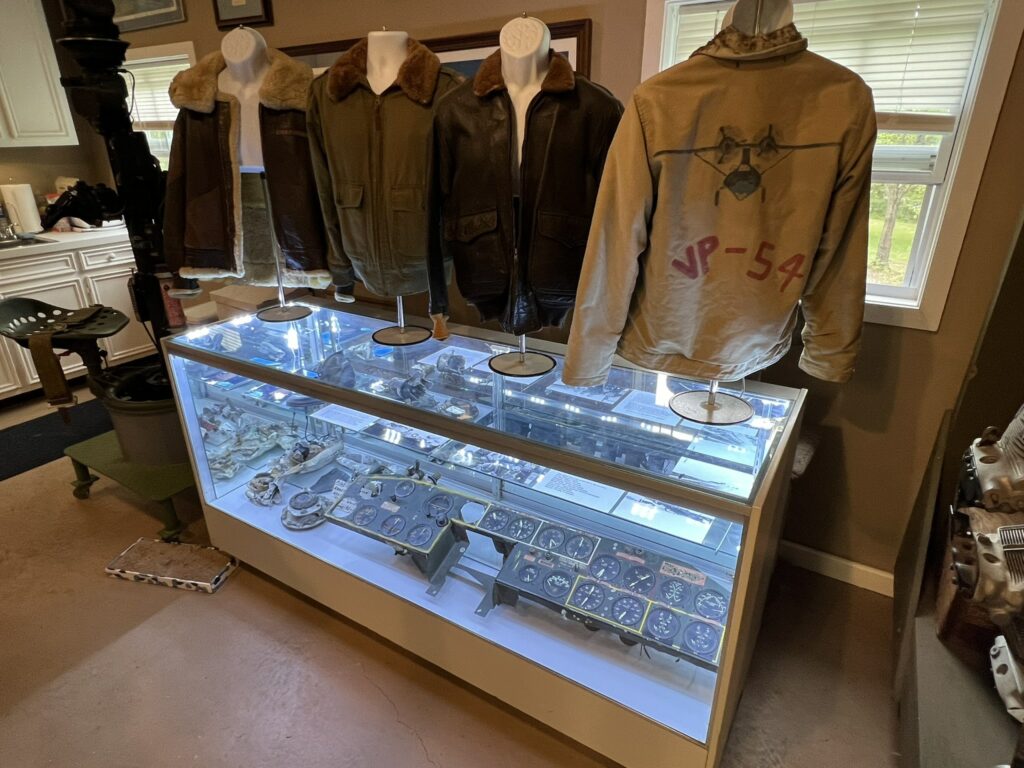
Display areas in Wings Remembered Museum.
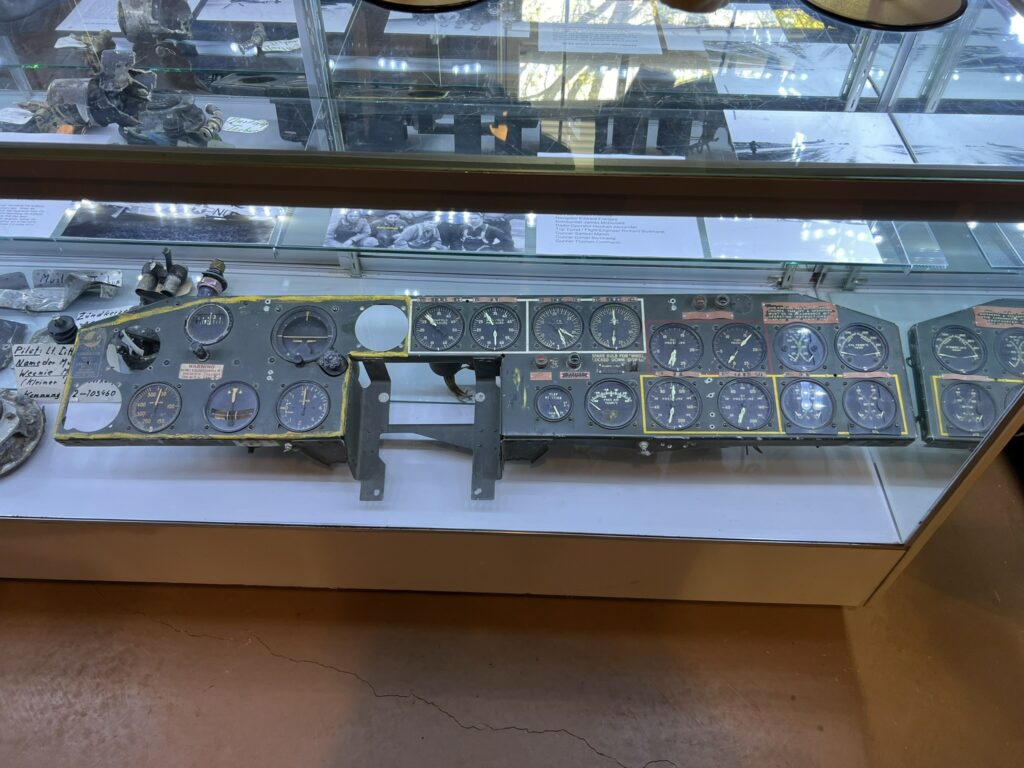
An instrument panel removed from a Consolidated B-24. It has not been touched since the war.
Just as our research on the Boeing B-17 revealed, the various dual gauges are all marked “L” and “R” instead of numbering the engines.
If you look closely, only one gauge has numbered hands, indicating that it was a replacement.
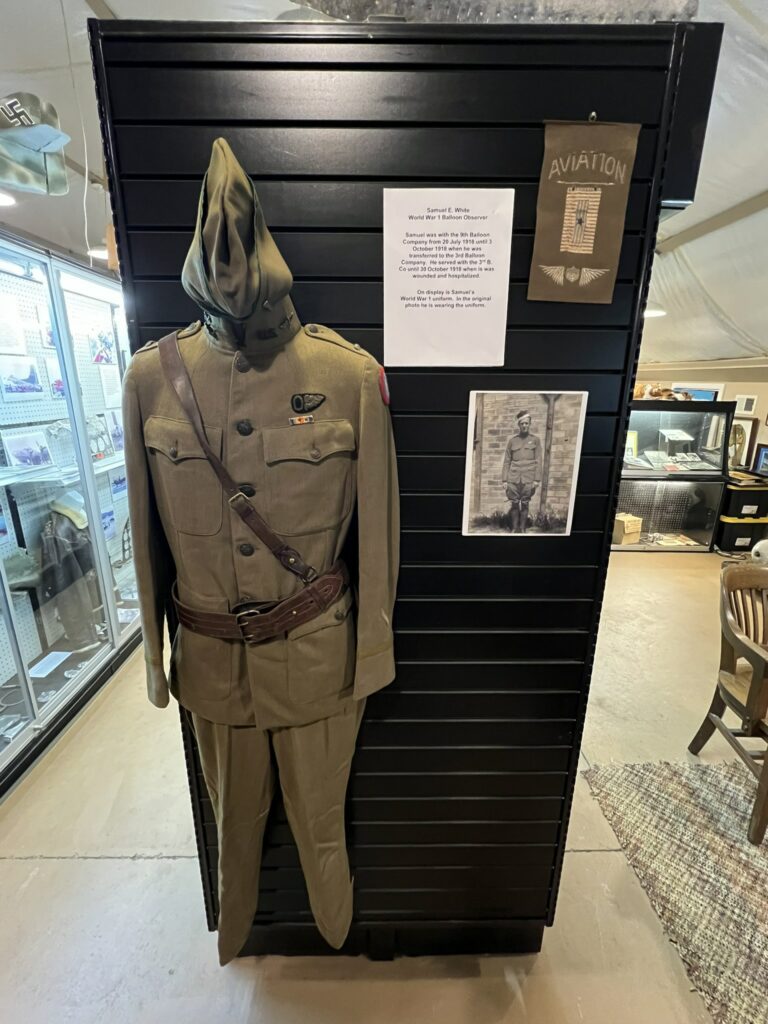
Uniform belonging to 2LT Samuel E. White, a Army balloon observer in the Great War.
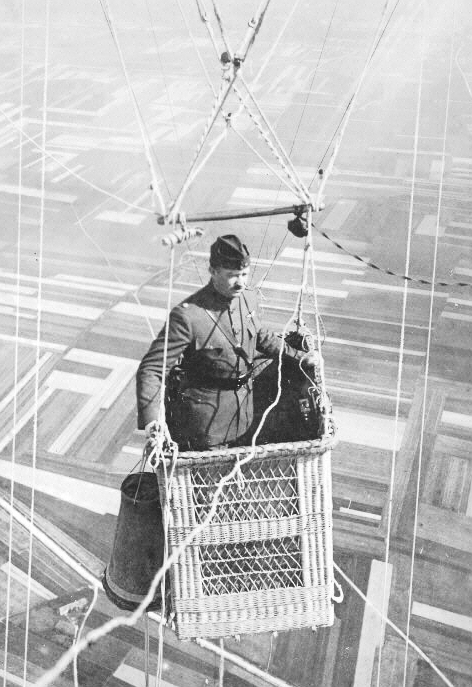
A US Army major at his station as a balloon observer.
One of the most dangerous occupations of the Great War, balloonists served as cartographers and artillery spotters. Note the telephone line and parachute stowage bag – balloonists were one of few aviation personnel issued parachutes at this time.
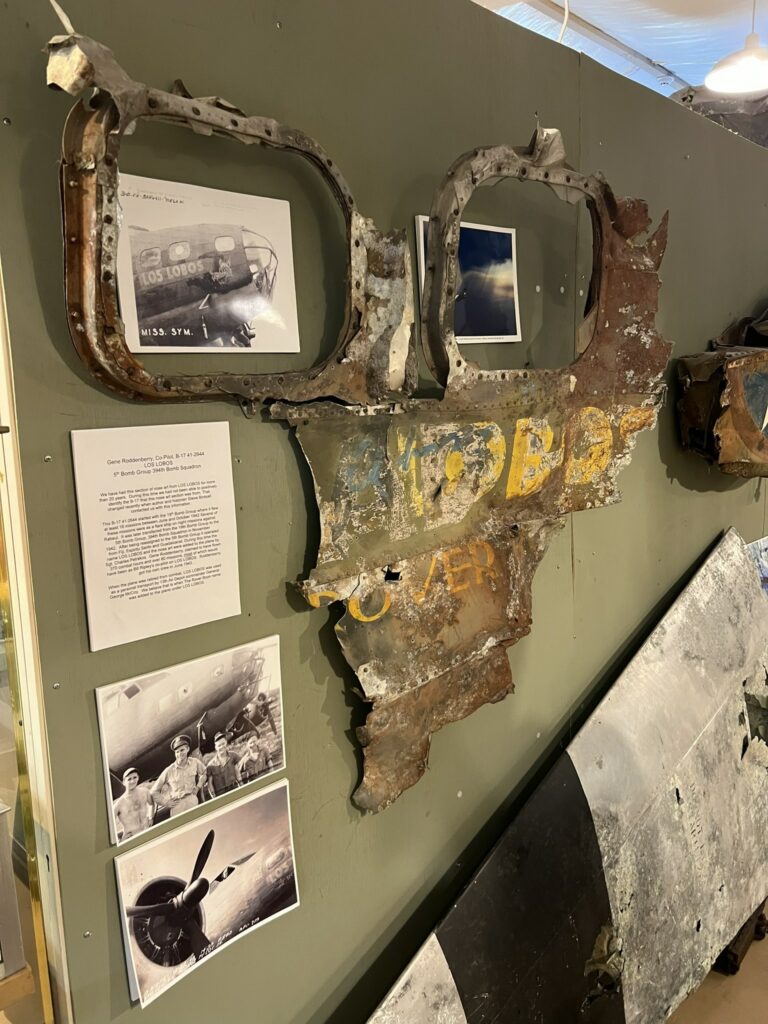
The nose art to Boeing B-17E Los Lobos (41-2644). This aircraft saw service with the 19BG and 5BG in the South Pacific before becoming a hack for 13AF depot commander BG George V. McCoy Jr.
This wreckage was identified thanks to the generous aid of historian Steve Birdsall.

Crewmen pose with Los Lobos (41-2644, 5BG) prior to her being named.
Second from the left is her copilot, 2LT Gene Roddenberry.
Today Roddenberry is best known as the creator of the television series “Star Trek.”
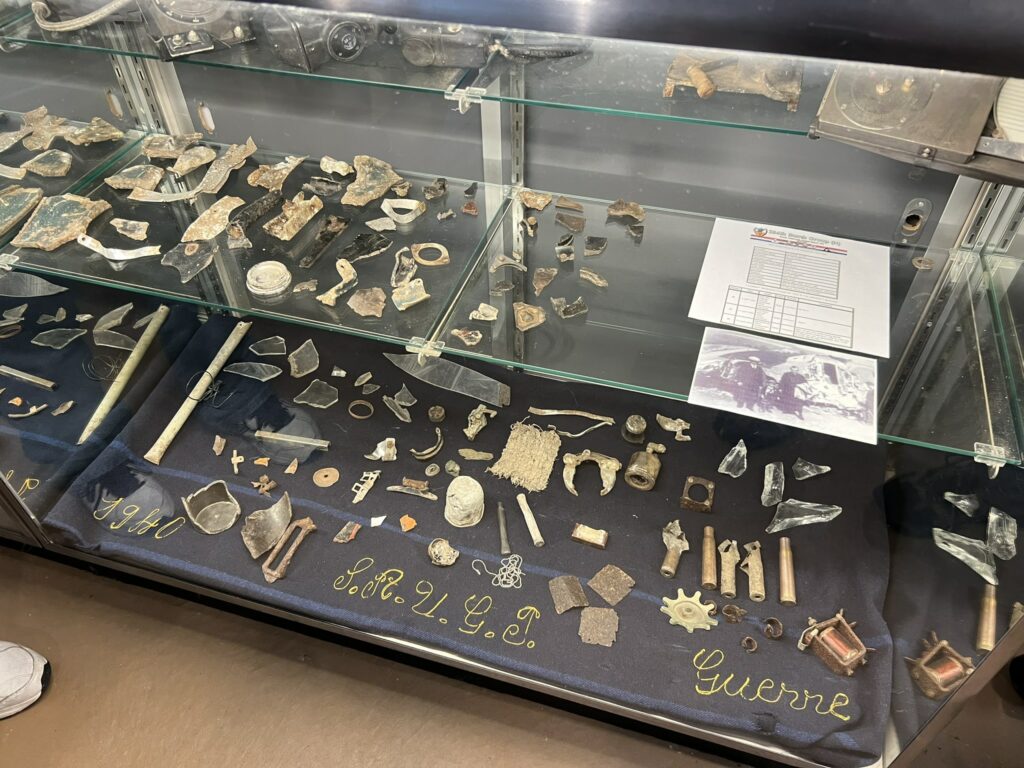
A display dedicated to Boeing B-17G GI Jive (42-97228, 384BG). The 384BG was the same unit in which the B-17F we are rebuilding, Lucky Thirteen (42-3455), served.
GI Jive was lost over Schweinfurt, Germany on 13 April 1944. The blue blanket on the bottom shelf was found in the aircraft’s wreckage. The 13 April 1944 strike on Schweinfurt saw the heaviest losses suffered by the 384BG during the war, losing nine of the 27 aircraft they launched that day.

The crew of GI Jive (42-97228, 38BG).
Nine of her crew survived, being taken as prisoners of war. Her navigator, 1LT Morris Kantor (second from the right, bottom row), was killed in action.
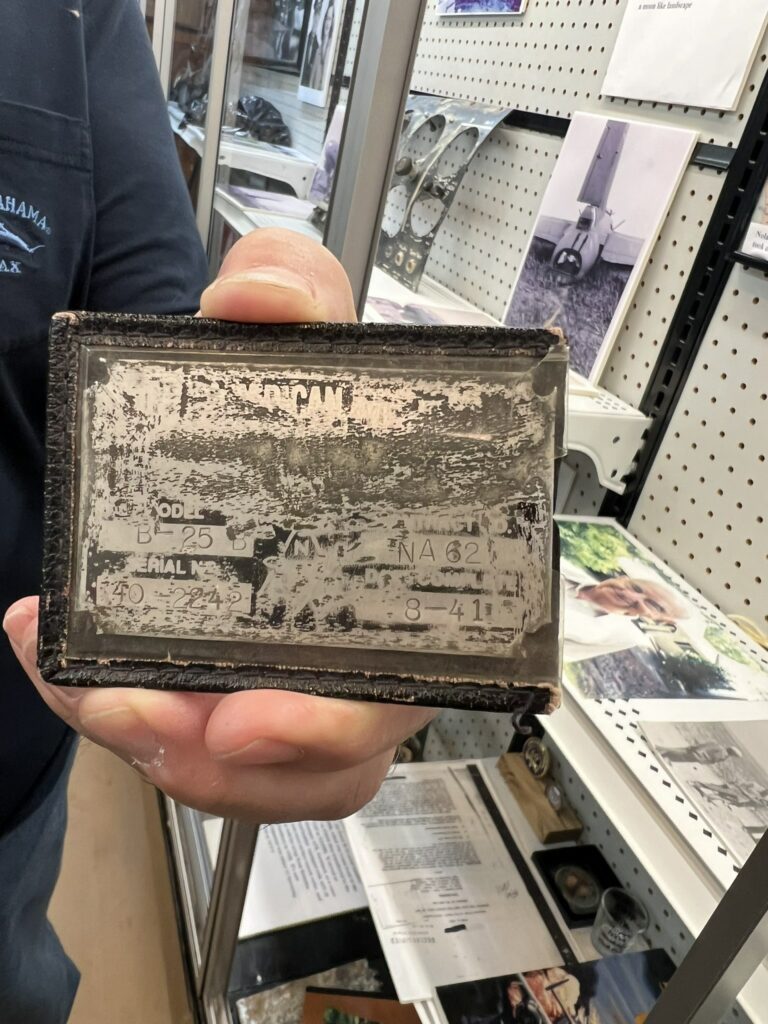
A piece which defies belief – the dataplate to North American B-25B 40-2242.
Piloted by CPT Edward J. York, this aircraft was the Doolittle Raider which landed in the neutral Soviet Union rather than crash in occupied-China.
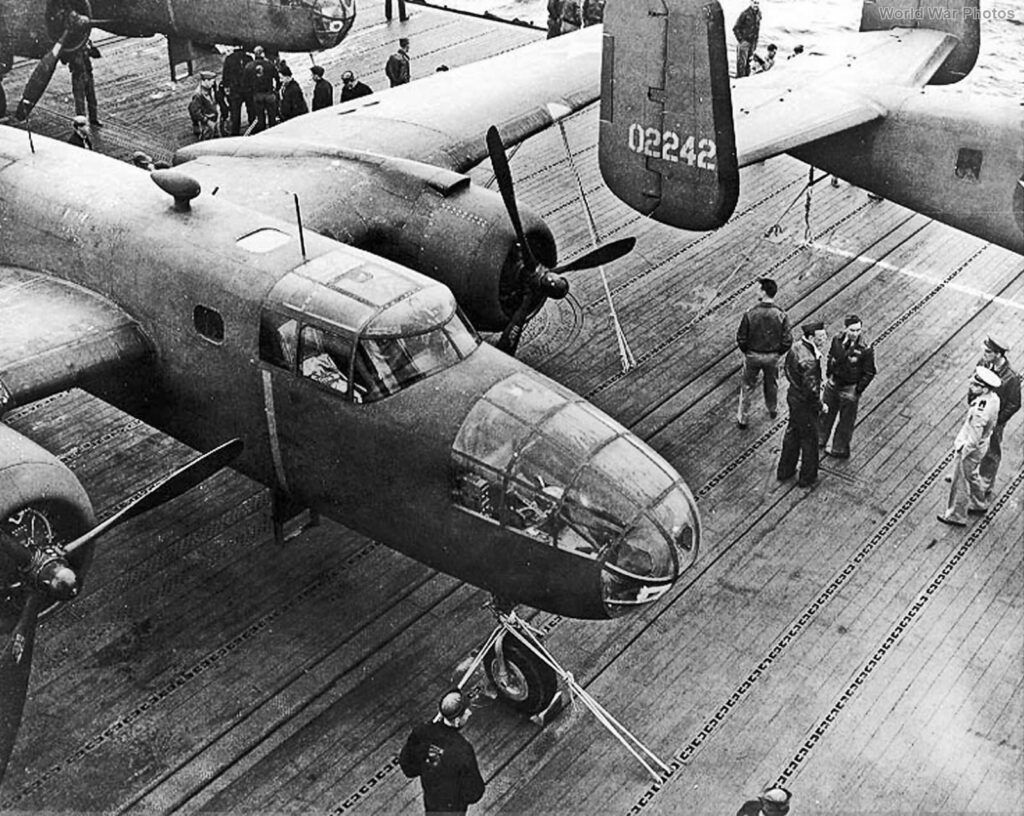
North American B-25B 40-2442 is visible on the right aboard the deck of the USS Hornet (CV-8).
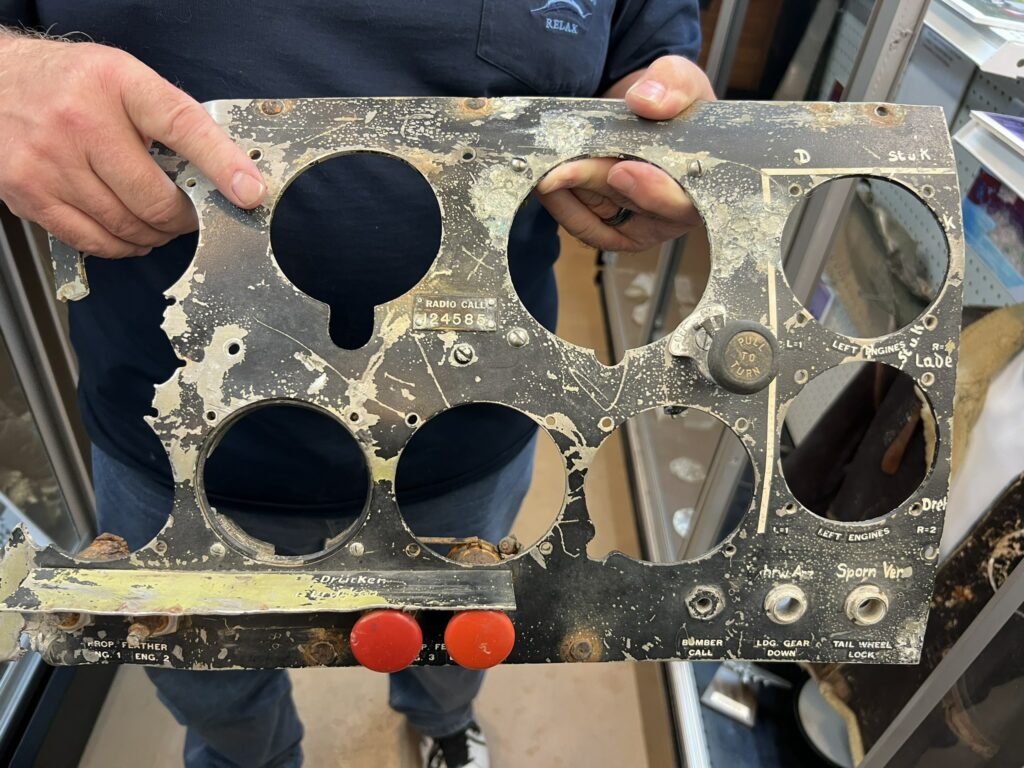
Another piece which defies belief – the center panel from Boeing B-17F Wulfe Hund (41-24585).
Originally with the 303BG, this bomber crashlanded in France on 12 December 1942 and was the first B-17 to be captured by the Luftwaffe.
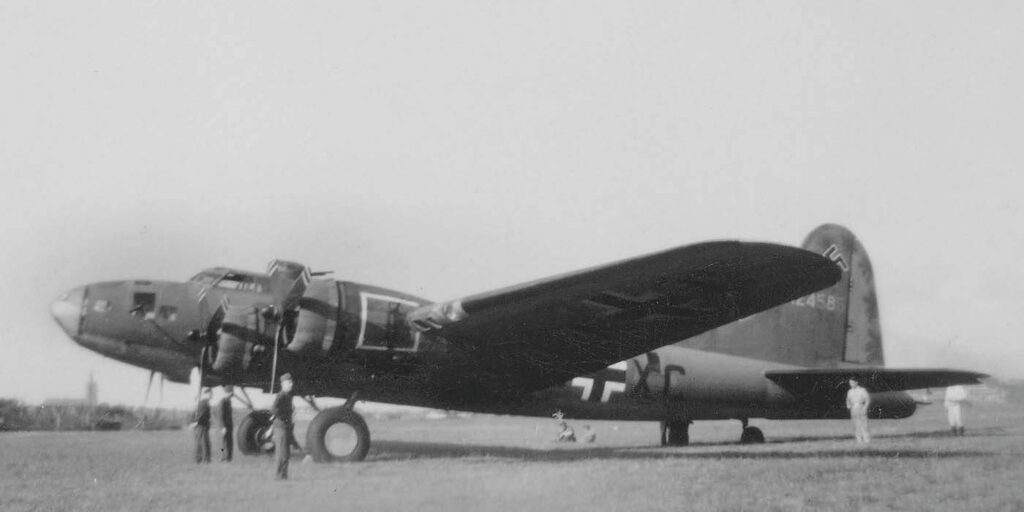
Boeing B-17F Wulfe Hund (41-24585) in her Luftwaffe colors.
Though suffering from the low-quality German fuels, the bomber was nevertheless used as training aid for Luftwaffe fighter pilots.
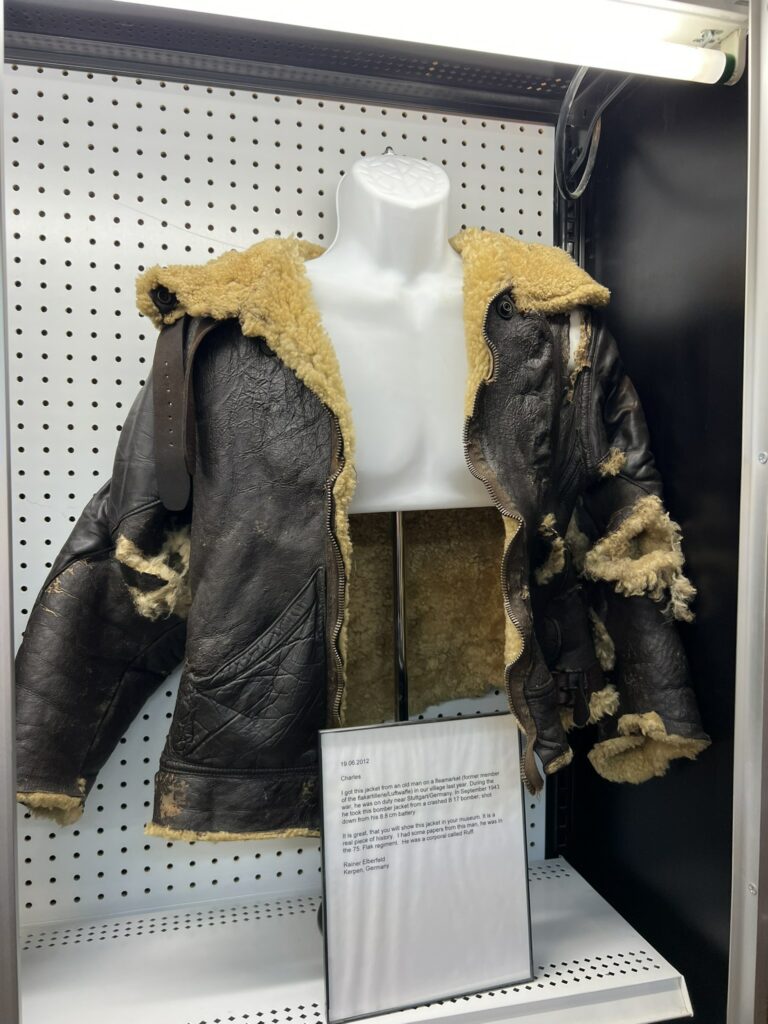
A Type B-3 jacket recovered from a Boeing B-17F downed on 6 September 1943. This strike saw 407 Boeing B-17s bomb the industrial district of Stuttgart, Germany, with 45 being lost to enemy action or fuel exhaustion.
One of the bombers lost this day was the Boeing B-17F we are currently rebuilding – Lucky Thirteen (42-3455, 384BG).
The aircraft from which this jacket originated is unknown. Maybe it came from Lucky Thirteen – anything is possible!
Photo taken 20 April 2024.
